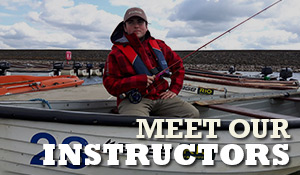Back End Big Fish
Towards the end of the season, usually around October/November, the resident overwintered fish who had been in feeding over the deeper water on buzzers and terrestrials, start to move to the shallows. As the water out over the deeper water cools quicker the fry tend to migrate to the warmer water of the margins. At this of year, the buzzer hatches also start to slow due to the cooling temperatures and the fish start to look for alternative food forms whether this be fry, shrimps or snails.
As such the colder months are the perfect time to try and land these quality specimens that are like “silver bars” with full spade-like tails. With lower water temperatures and days getting shorter, the fish become more aggressive in their feeding, rounding up fry and trying to pack on the weight before the long cold winter arrives. This aggression often means that the usually shy allusive “residents” can let down their guard and be tempted to take a well presented artificial.
Due to their aggressive nature towards the back end it is often large fry imitations that account for the capture of these larger fish. Snakes, Tubes, Minkies and Humungus all feature heavily on the catch reports at this time of the year.

When it comes to fishing these patterns there is no better angler then our very own in house guide Lee Henfrey. Lee is a master of fishing the “dark side” as he likes to call it. Earlier in the week I shared a boat with him and we headed out looking to target some of Draycote’s residents. While we have not had the hard frosts and cold mornings that really get the big fish hard on the feed, the water temperature was dropping nicely, and the days are growing shorter in length. Before the really cold days of the late autumn/early winter the fish head up the shallows and this was where Lee and I would concentrate our efforts. Favourite areas for this time of year are Croft Shoal, Middle Shoal & along the Farnborough Dam.
We decided that we would start fishing Farborough Spit, Lee’s favourite spot at this time of year as it offers deep water either side, with an area of shallow water which the fish move onto when feeding. It always holds fish towards the back end and is a prime location for fry to hold. As we had not had many hard frosts, we started by drifting just off the spit over the slightly deeper water working towards the shallows. Lee worked an olive snake on a di 5 Forty Plus. The reason for him choosing the forty plus was because it has an intermediate running which means the line holds slightly higher in the water before the head digs in. This then causes the fly to sweep quickly off the surface. It’s often this sweeping action down through the water column that triggers the take. And sure enough, it wasn’t long before Lee hit the first fish of the day just as we got to the shallow water, half way back through the retrieve. From the speed of Lee’s retrieve, and the length of the cast, we guessed that the fish had taken just as the fly had gone down the drop off at the edge of the spit.
Soon after this I had my first bit of interest. Using a di 5 sweep line and a perch fry pattern I had a follow from a big brown – very exciting. A repeat cast straight back out to see if I could tempt him to follow again, as browns are normally very territorial and after following will often return to the same spot. However, this time the brown didn’t follow but was instead replaced by a big rainbow. Despite covering the lies of these large fish with numerous casts, they failed to re-appear. After the drift we decided to anchor in the spot where I had risen the big fish to the boat, so we could work the depths and flies to try and tempt them into making a mistake. Once the anchor had set I landed 2two rainbows in quick succession on the flashy perch fry imitation. This prompted Lee to change to a tube and no sooner had he cast it out into the shallows, a lovely rainbow was on.

During the next 30 mins the sport was excellent, with Lee casting his favourite tube into the shallows and getting a lovely sweep into the drop off where eager fish were clearly waiting. This was a great example of the sport that can be experienced, and the quality of the fish caught, when the angler gets all the variables right. Lee was working the fly perfectly to get the sweep of the tube just at the edge of the drop off and causing the fly to pull right in front of the fishes’ nose. This perfect combination was soon re-warded with another quality fish for Lee taken on the tube:

However, after about another five rainbows the sport just dropped off and so we found ourselves back to the drawing board. We realised that we had been in the same spot for a while and the fish had been subjected to a lot of pressure. We therefore opted to move the boat over to slightly deeper water to the left of the spit and change our lines to a RIO Intouch Deep 7 with a pair of Humungus Boobies. These were spaced at 10ft apart which gave us 20ft of leader to ensure the flies where propped off the end of the line. The thinking behind this set up was that the fish that had been under pressure and maybe wanted a slower fly presentation. Also, due to that angling pressure, they appeared to have taken refuge deeper in the water column. The wind had also increased leading to a decline in surface temperatures to further induce them to drop off into deeper water. This change in tactics seemed to do the trick as straight away rod tips started to get pulled down with yet more frantic action from fit, silver, grown on bars like this one:-

At the end of play the pair of us had netted over thirty rainbows, with around ten of those over the 3lbs mark and a couple of larger 4lbs specimens. It just shows that towards the end of the season the fish follow the same routines each year and that if you work to get the tactics right, and understand what the fly is doing sub-surface, you can enjoy exceptionally good sport.
To book a guided session with Lee looking at late season tactics to land these large reservoir residents then call the lodge on 01788 812018.

